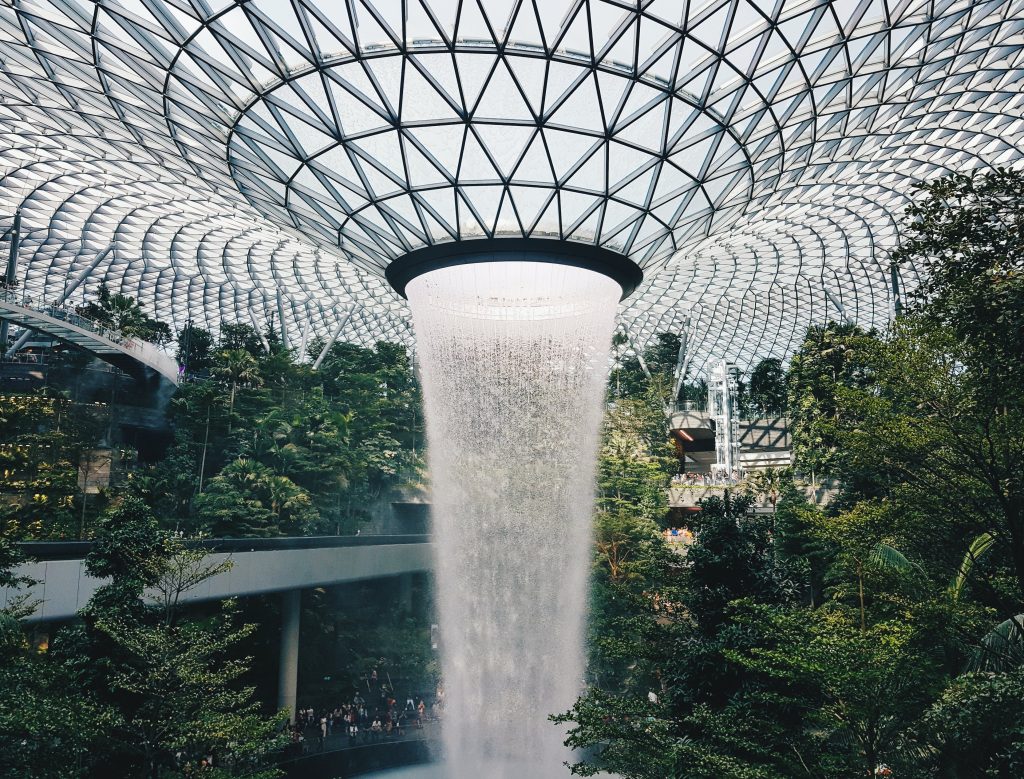Building Tomorrow’s Cities Today: The Eco-Revolution in Urban Design

By: Katie Brenneman
Strides are being taken to revolutionize construction. Modern buildings incorporate more eco-friendly aspects — from solar panels to “living” walls. The construction of tomorrow’s cities starts today, and it’s vital to ensure that construction is planned with the planet’s future in mind. Learn how eco-friendly urban design is currently underway and how cities might have to look to create a more sustainable future.
Tech and Sustainability in Modern Urban Planning
First, it’s essential to understand the importance of green initiatives in city building. Large cities make up about 70% of total carbon emissions globally. The dense population, industrial buildings, and transportation systems contribute to climate change. However, there are ways to reduce this impact. Urban planning can introduce more eco-friendly materials, processes, and layouts that minimize the greenhouse gases emitted from these buildings and vehicles.
It’s also important to understand technology’s role in furthering this initiative. Smart city planning involves advanced sensors, data analytics, and connectivity to optimize resource utilization, enhance energy efficiency, and reduce environmental impact. Intelligent traffic management systems can help alleviate congestion, minimize vehicle emissions, and promote eco-friendly modes of transportation.
Renewable energy sources in urban infrastructure, such as solar panels and wind turbines, also produce cleaner energy. Digital modelling and simulation tools allow urban planners to assess the environmental impact of proposed designs before implementation. They can even ensure that green spaces are preserved and natural ecosystems are protected. Overall, technology catalyzes innovative, eco-conscious urban design practices.
The Use of Eco-Friendly Construction Materials
Incorporating eco-friendly materials into urban planning is crucial for sustainable and resilient cities. Alternatives to traditional construction materials like concrete and steel are increasingly used to build structures. Some of these options include:
- Mycelium, made from the solid, fibrous structure of mushrooms;
- Salvaged materials, like reclaimed wood;
- Mass and cross-laminated timber;
- Concrete alternatives include hempcrete, ashcrete, and green concrete.
It’s important to note that current initiatives are pushing the decarbonization of the global cement industry. Traditional cement production is a major source of carbon emissions, contributing significantly to climate change. When you think of large cities, you probably picture lots of concrete. However, strides are being made to develop alternative and more environmentally friendly cement-making processes, reducing the industry’s carbon footprint.
As the world faces the challenges of a warming climate, the future of construction must adapt. This adaptation involves utilizing materials that mitigate carbon emissions and enhance resilience against extreme weather events. Eco-friendly urban planning is a holistic approach that addresses current environmental concerns and prepares cities for the challenges of a changing climate.
Sustainability’s Impact on City Safety
Concerns about the safety of eco-friendly cities arise. The durability of materials and reliability of tech are in question. However, green tech advancements can enhance the safety of big cities.
For example, smart streetlights can help deter crime while reducing carbon emissions. These structures are intelligent, meaning they can analyze the best times to turn on and off to reduce electricity wastage. Further, they require less maintenance, meaning less money is spent sending crews to fix issues. The safety features include digital signage and speakers that can make evacuation announcements and disseminate warnings to nearby citizens. They can also track traffic in real-time with sensors, giving insights into ways to make the city’s transportation systems greener.
As far as material durability is concerned, eco-friendly materials often outperform traditional ones. Older construction materials like wood and concrete can degrade over time and with exposure to the elements. On the contrary, materials such as recycled steel, bamboo, reclaimed wood, and advanced composites exhibit impressive durability, often surpassing the lifespan of conventional counterparts. As cities aim to build infrastructure that can withstand the test of time, using eco-friendly materials becomes a strategic choice along with its green benefits.
Building Out, Not Up
It’s often thought that densely populated cities are worse for the environment. However, crowded residential areas are greener, utilizing public transportation and reducing energy and water use. Urban areas are often touted as eco-friendly for building up — and housing more people in less space and fewer structures. However, this isn’t what makes big cities greener than their more sprawling counterparts.
High-rise buildings may accommodate more residents, but they also use up more materials — many of which are older and need frequent maintenance and repairs. Instead of building up, construction teams should build low-rise, compact buildings. This would still offer the advantages of dense housing while reducing material waste.
Moving Toward Greener Cities
Integrating eco-friendly materials and smart tech into urban construction marks a pivotal shift toward sustainable cities. Urban planners are paving the way for a more environmentally conscious future with ongoing efforts to cut carbon emissions and increasingly use durable alternatives. As these changes are implemented, the longevity and adaptability of urban infrastructure further contribute to eco-consciousness by requiring less maintenance and rebuilding. By adopting these practices now, cities can thrive harmoniously with the planet.
_________________________________
Katie Brenneman is a passionate writer specializing in business management, tech innovations, education, and sustainability-related content.



